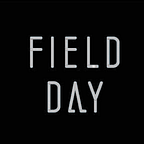Gem Hunter: Using a Game as a Diagnostic tool for ADHD
The UW Madison Populin Lab in the Department of Neuroscience makes ADHD testing less boring by creating a diagnostic video game. The dream is to help doctors will be able to determine correct ADHD medication dosing.
The research that could help doctors determine the correct dose of medication for kids with ADHD faces a tough challenge — the lab tests to create the diagnostic tools are simply too boring for kids to sit through!
Doctors who work in clinical environments use subjective tests like questionnaires when they diagnose kids with ADHD and when they determine the dose level for the medication prescribed. There is currently no objective test for diagnosing and prescribing medications for ADHD. Luis Populin and Abby Rajala at the Populin Lab at the UW-Madison have a dream to create objective diagnostic tests to discover the best dose to suit each individual child. The test would be affordable and easily administered. But after the scientists themselves found the test too boring to sit through, they wondered how kids (let alone those with ADHD) would manage.
“The tests are based on eye movements. It’s hard for kids to sit there for an extended period of time,” Abby said. “We wanted to make these tests more interactive and engaging so we could get more data.”
So the Populin Lab turned to Field Day to help make the test into a fun game. One caveat was that the game couldn’t make the test be too fun, Abby explained. “You don’t want the fact that it’s more fun to muddy the innate quality you’re trying to measure. There were certain cognitive measures we had to extract in the purest form possible.”
“This project was embedded in scientific rigor,” said Phil Dougherty, lead software developer. “The Populin Lab would run our game against the original control group to compare results with the original tests.” We had to make sure that the “fun” game mechanic didn’t skew the findings away from the original test. These kinds of studies are designed with thoughtful rigor. We learned lot to learn about how to effectively use games in scientific research.
In addition to keeping the data collection as pure as possible, the game would have to run using the same mechanics as the initial tests — using an eye-tracking machine with specific software. Like many scientists know, the software and hardware that many of them rely on is often a decade old. That’s a hundred years old in the computer world. Luckily the Field Day developers are computer scientists and are able to learn new development languages and understand old hardware. It was challenging because the graphics capabilities of the eye tracker computer set-up were very limited. We had to work with our graphic designer and developer to make it work.
Our teams met together and brainstormed a number of game ideas. What would fit all the research and technical constraints but still be a ton of fun? A first person shooter style game? Matching? Something like Pac-Man? When the idea of a jewel hunter game up, we knew we’d found something that would keep the scientists AND the kids happy. Instead of watching Xs disappear and reappear on a screen, kids would instead be wily jewel hunters on a quest to discover great treasure!
Abby’s advice to other researchers looking to make their data collection more engaging is to have an open mind about what the game could be. “Let Field Day do what they do. Have an idea of what you want, but be able to go outside what you envisioned. Trust the experts!”
With the game play mechanics sorted out, it was up to the art and story team to keep the game engaging and playful.
Creative Director, Sarah Gagnon, tethered the art team’s playful creativity to the project’s technical and scientific requirements. Designer Eric Lang was inspired by his favorite childhood 8-bit game styles when he crafted the jewel hunters’ world. And to keep the story glued together with fun interaction between levels, writer Lindy Biller worked with Eric to create magical cut scenes. (Read the story here!)
At each phase of the game design, Field Day director Dave Gagnon worked directly with Luis Populin. Together, they are discussing ways to seek more grants to continue research and testing.
“I think this game will make a significant improvement in our data collection,” Abby said. “Our hope is that we can push the boundaries of this game even more in the future. It has a lot of potential! This is just the beginning.”
